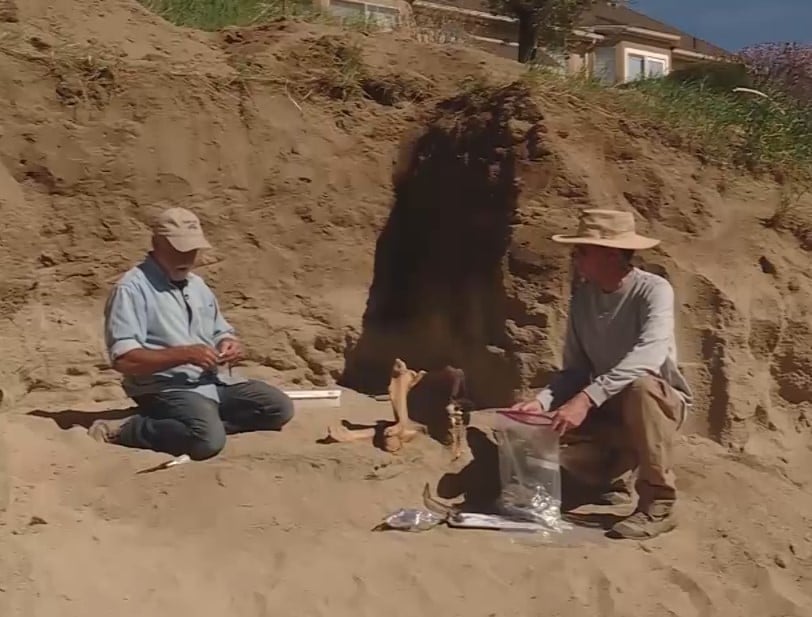Last week, paleontologist identified the skeleton of an ancient horse that was from an ice age nearly 16000 years ago.
This ancient horse was discovered in Levi, Utah – an unexpected find given that the majority of the state was underwater until about 14000 years ago. Still, this ancient horse managed to survive around 2000 years before the water drained, and was only discovered when the Hill family in Lehi began to move dirt around their backyard. The family was planning to build a retaining wall and plant grass, but they got more than they bargained for when they discovered the ancient horse under just seven feet of sandy clay.
According to Laura Hill, the woman who discovered the ancient horse with her husband, Bridget, stated that they didn’t think much of the discovery when they first unearthed the bones – believing that it was a simple cow. Considering that Lehi was once mostly farmland located about 15 miles out from Provo, it would make sense that it would be some sort of farm animal. Luckily, she was able to consult her neighbor who was a paleontologist at Brigham Young University and found out pretty quickly that the fund was much more significant than she originally thought- with initial examination suggesting that it was an ancient horse from the Pleistocene Era.
“I was shocked,” Ms. Hill said, reports the New York Times. “This is something we did not expect.”
While this ancient horse is an unexpected find, Utah isn’t exactly a strange place to discover fossils. The area is home to several different fossil sites in which dinosaurs and other ice age animals like mammoths, mastodons and saber-toothed tigers have been discovered. Horses have roamed Noth America for roughly 50 million years so this ancient horse isn’t one of the oldest specimens we’ve seen. Still, it’s significant in that it was discovered so close to the surface and in an area that was largely underwater during the time in which the horse roamed the country.
Ross MacPhee, a curator in the department of mammalogy at the American Museum of Natural Hostlry, told the New York Times that there were two main kinds of horse that dominated the area in which the horse was found, and that despite the the harsh conditions, “those horses could live anywhere.”
Rick Hunter, a paleontologist at the Museum Of Ancient Life, was called in by Ms. Hill and he and a team determined that it was an ancient horse that roamed the earth around 16000 years ago.
The ancient horse skeleton was missing its head, but was otherwise quite complete – giving researchers insight into the exact makeup of this specimen. Me. Hunter reported that the horse was roughly the size of a Shetland pony and was found lying on its left side – with all four legs tucked in near the torso. The skeleton was, unfortunately, slightly damaged from exposure to weather – but was still surprisingly intact given the age of the specimen and the rough conditions in which it was located.
Although there’s no way to figure out how, exactly, the animal passed away, Mr Hunter theorized that the horse may have been trying to escape a predator and ended up running into the lake. “Horses can swim,” he said but “Maybe it got trapped out there, drowned and sank to the bottom. In current-day Utah, the area is no longer underwater – leading to the situation with the Hill family managing to uncover the ancient horse with just a few feet of digging through clay.





